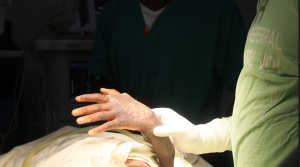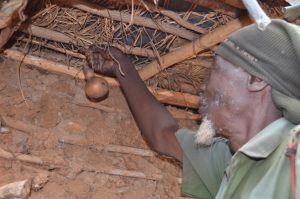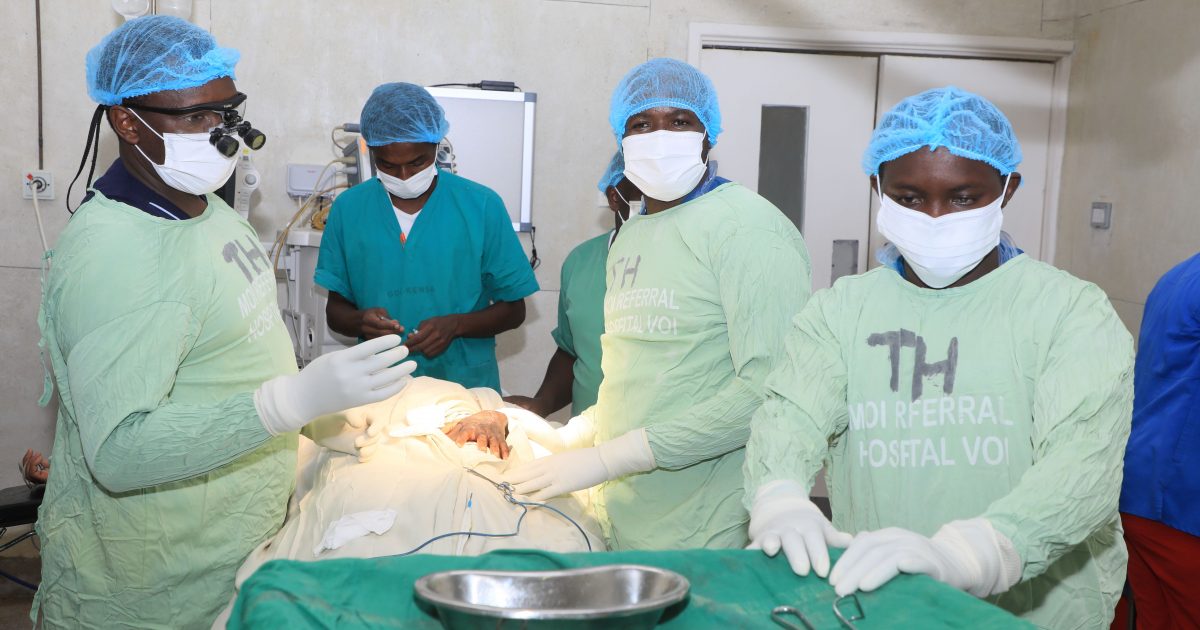Her limp is barely noticeable. Not until she starts walking do her gingerly strides betray an irregular gait. A slight wince points to a dull pain she valiantly keeps repressed. Her slow and measured shuffle echoes the ungainly trudge of one favouring a particularly sore limb. Close scrutiny of her left leg reveals disquieting evidence of several faded but ugly scars that mar her skin.
For Ms. Dorcas Kimoto, 55, the scars are more than a motif of pain. They remain a chilling reminder of a near-fatal encounter with one of the deadliest reptiles, a fully-grown puff adder.
“It almost killed me. I survived by the grace of God,” she mumbles in a subdued tone.
For the mother of five, the details of that fateful morning remain vivid. The incident in the bushes around Kisimenyi village on one morning in May 2022 would condemn her to a hospital bed for over a month and eventually leave her so atrophied that she now struggles to perform simple domestic chores.
On that morning, Ms. Kimoto had driven her few goats to the bush to nibble on twigs and chew a few curled leaves clinging to bushes that had turned scraggly, thin and dusty. Drought and elephants from Tsavo National Park had ravaged farms and fields. Farmers were relying on herding goats to survive.
While navigating through one section of the gnarled bush, something struck her left leg. The blow, vicious and fast, was utterly agonising. As she yelped in pain, her eyes fell and she caught a horrifying glimpse of a dull-grey tail slithering lazily deeper into the bushes. The twin agonies of excruciating pain and sudden realisation of what had happened hit her. She screamed.
“Neighbours saw my leg and said I needed medical attention,” she recalls.
The nearest health facility, Bughuta Dispensary, had no anti-venom. Medics referred her to Moi County Referral Hospital; some 60 kilometres away. Neighbours hired a car to make the long, tortuous journey. By this time, the venom had spread. She was delirious and feverish, and she drifted in and out of consciousness. Her leg was swollen and turned angry black.
“I was in great pain. I fainted many times and I had to be revived,” she says.
More bad news awaited. Moi Referral had run out of anti-venom. To live, she had to buy from a chemist. Her brother and friends raised Sh7,000 and bought one vial. Only then did doctors administer the anti-venom to pump the toxin from her system.
She spent over a month in hospital as doctors managed sores that had become gangrenous. Before she was completely healed, she requested to be discharged. The prolonged stay in hospital terrified her. The risk of bills accumulating to unmanageable levels was real. By that time, she had accumulated over Sh40,000.
“I had to leave because my continued stay made my bill huge. I sold my goats to settle my expenses,” she explains. At home, her treatment included smearing sores with honey, claiming it had healing properties.
Ms. Kimoto’s leg has never recovered. It remains weak and occasionally hurts. She cannot engage in strenuous activities because of pain.
“I am a widow. I can barely work to provide for my family because of my condition. It has become tough,” she says.
Mr. Paul Kioko, a mason from Maungu village, had a similarly tragic experience after his 14-year-old daughter was bitten by a snake at their home. Her condition became so severe that doctors had to perform skin-grafting procedures after the initial treatments failed. At the end, the total cost for treatment and surgical operations went over Sh 300,000. Despite the huge amount spent, his daughter’s arm remains paralysed and she can barely lift anything. The father says he sold all his livestock to meet the cost of treatment and is still struggling to buy medication to manage her delicate condition.
“I had to do it for my child. My biggest regret is that her dream of becoming a soldier is now gone. Her arm will never be the same again,” says the distraught father.
The duo’s tale of woes mirrors the predicament confronting thousands of farmers in rural villages who continue to bear the brunt of economic ruin occasioned by snakebites. The farmers regard snakebites as a silent pandemic that is stealthily decimating their financial abilities while thrusting households deeper into the cauldron of inescapable poverty owing to the cost of antivenoms and management of resultant health complications. For families living from hand to mouth, spending thousands of shillings to treat snakebites is a crippling burden.
Ms. Isabella Kidede, a budget analyst with International Budget Partnership (IBP), says treating snake bites is costly for victims, who are mostly small-farm holders and herders. It becomes more prohibitive as the victims reside in remote and marginalised areas with no roads, forcing them to hire transport to access hospitals.

“Most victims come from extremely poor families. The cost of anti-venom and other health problems is a burden. This has contributed to entrenching poverty at household level,” she notes.
Globally, according to the World Health Organisation, 2.7 million cases of snakebites are reported annually. It is estimated that Kenya has 1,000 annual deaths from snakebites.
Despite such grim statistics, snake bites receive fringe attention from government and policymakers. A major reason attributed to this scant attention is classification of snakebites as a Neglected Tropical Disease (NTD) alongside leprosy, dengue fever and worms. The relegation of snakebites to the backburner of health management has unwittingly condemned poor farmers to shouldering a huge financial burden arising from treating a venomous bite.
In Taita-Taveta County, data shows health facilities have treated 1,756 cases since 2016. This number is suspected to be higher because other victims, unable to afford the cost of treatment, avoid health facilities and opt for traditional healers who use ‘Kidonga, a mythical black stone that sucks venom from a body. Other victims lick a bitter-tasting herbal mix of dried ash from selected trees to overpower the venom.

Mzee Julius Mwarangu, a traditional healer, leaves his small calabash with the healing ash dangling from a truss outside his hut for easy access by neighbours bitten by snakes.
“It is free of charge. I keep it outside so that anyone bitten can get it quickly,” he says.
County Director of Health Services, Mr. Elvis Mwandawiro, says anti-venom is mostly stocked at sub-county hospitals where management of snakebites is done better. Each facility stocks at least 15 vials.
“The sub-county hospitals have the resources and specialists to manage severe cases of snakebites,” he says.
According to a 2021 household survey on the burden of snakebites in rural communities in Kenya conducted in Kilifi, Kajiado, Kwale and Taita-Taveta counties, more than a third of the sampled population reported having some experience with snakebites. The hot, dry and bushy climate in Taita-Taveta County provided apt climate for a thriving snake population, with the region known for having some venomous snake species, including black mamba, black-necked spitting cobra, twig snake, boomslang and puff adders.
Snakebite victims’ fate was sealed after the government amended the Wildlife Management and Conservation Act of 2013. It removed snakes from the list of animals qualifying for compensation for causing injury, loss, or death. The decision came after snakebites accounted for 81 percent of all claims of human-wildlife conflict. The possibility of paying billions of shillings as claims to victims was deemed unsustainable.
Currently, there is no compensation from the government. This means victims bear full cost of their treatment, including meeting costs for losses and potential lifelong health complications arising from the bites.
However, calls are being made for the government to rethink the blanket removal of snake attacks. Some proposals argue that only the most severe snake attack cases should be compensated.
“The act is discriminatory. One can be compensated for losing a leg to an elephant but not for having a leg amputated because of a snakebite. This law should be relooked at,” says Mr. Alex Mwasi, an environmentalist in Mwatate.
Already, organisations including Bio-Ken Snake Farm, Wildlife Direct and Red Cross have partnered to advocate for the elevation of venomous snakebites as a notifiable disease. This recognition would allow the government to gather data on snake bites, map the hotspots and stock hospitals with the correct anti-venoms to reduce fatalities.
By Wagema Mwangi





